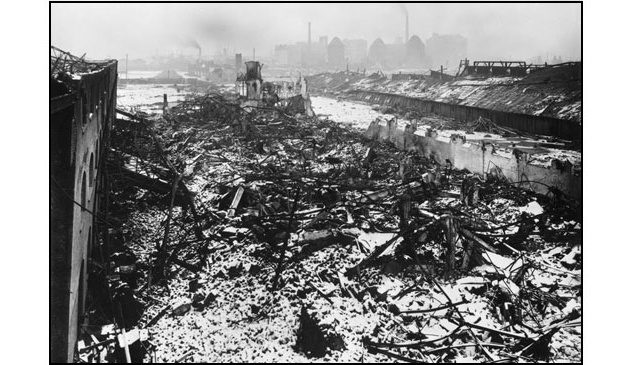In brief – Early-20th century London

County Hall, offices of the London County Council, opened in 1922 on the south side of Westminster Bridge. At that time it was unfinished, hence its lack of symmetry in this photograph. It was built on the site of the earlier Metropolitan Board of Works offices and various wharves and factories. It served as the headquarters of local London government until 1986.
In the first half of the 20th century London was still expanding outwards, with new suburbs for the middle-classes. In a period of just twenty years it doubled in size. The London County Council created new estates of affordable housing and took control of education. Road transport changed from horse-drawn to motorized and new arterial roads were built to speed traffic to and from new suburbs. The underground railway network expanded with new lines around the capital. Millions of people were able to commute daily into their place of work in the centre. London remained a major manufacturing and financial city and the Port of London was the largest employer.
The new Edwardian era was a time of peace and general prosperity for London. The British Empire was at its greatest and trade at a peak. At that time the size of London’s population was 6.5 million, greater than Paris, Berlin, Moscow and St.Petersburg combined, more than twenty percent of the entire population of England and Wales. The conurbation stretched for sixteen miles from Acton in the west to Plumstead in the east, and a similar distance from Edmonton in the north to Croydon in the south. It was still continuing to expand, with ribbon developments shooting outwards and linking to further outlying towns and villages in Hertfordshire, Buckinghamshire, Surrey, Essex and Kent.
In the latter 19th century the London County Council had been formed to deal with administrative issues within the County of London. In 1900 the county, which only included the central districts of the total conurbation, was divided into twenty-eight Metropolitan Boroughs plus the City of London. Each became responsible for many of the administrative matters within their local area.
In 1903 control of education passed to the LCC. With nearly 1,000 schools and 17,000 teachers educating nearly three quarters of a million children the LCC’s responsibilities immediately doubled. From the time of the Great War many of the main initiatives undertaken by the LCC were under the leadership of the charismatic Herbert Morrison.
In 1914 Germany occupied Belgium and the British government declared war. Modern technology meant that London was then a target for German airships and airplanes. It was the first time for centuries that fighting had directly affected the city and it was ill-prepared. The first air raid occurred in May 1915 when a Zeppelin airship reached East London during the night, dropping about ninety bombs and incendiaries. Military aerodromes were opened at Northolt and Croydon and from 1916 fighter airplanes were equipped with newly-invented incendiary bullets so the airships became less of a threat.
In the early stages of war some London businesses went into decline, new building work slowed and there was less demand for exports. Industry reorganized to supply the war-effort, including a large amount of munitions manufacturing. As men left their jobs to join the armed forces their places in factories and other workplaces were taken by women and those not suitable for the call-up. For one of the few times in London’s history there was almost full employment. As companies competed for workers in a diminishing pool so wages increased and overtime was available. Economically, at least, London prospered during the Great War. The end of the conflict came in November 1918 and there were jubilant celebrations.
Until the second half of the 20th century London continued to be Britain’s largest manufacturing base. It had the biggest workforce and largest local market, commercial banks, and the advantage of the Port of London and rail network. Around the British Empire and beyond ‘Made in London’ was considered a sign of quality. About two fifths of the working population was employed in manufacturing of one kind or another.
There was much industrial unrest during the 1920s and 1930s, caused by workers pushing for better conditions and the fear of unemployment. In 1926 a General Strike was called by the Trades Union Congress in support of striking miners in the north of England and Wales. The strike lasted for six days, during which time the government had to use police and the army to maintain London’s transport system and keep the power stations working.


